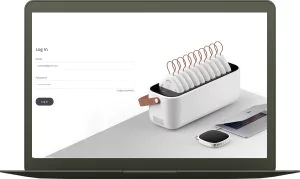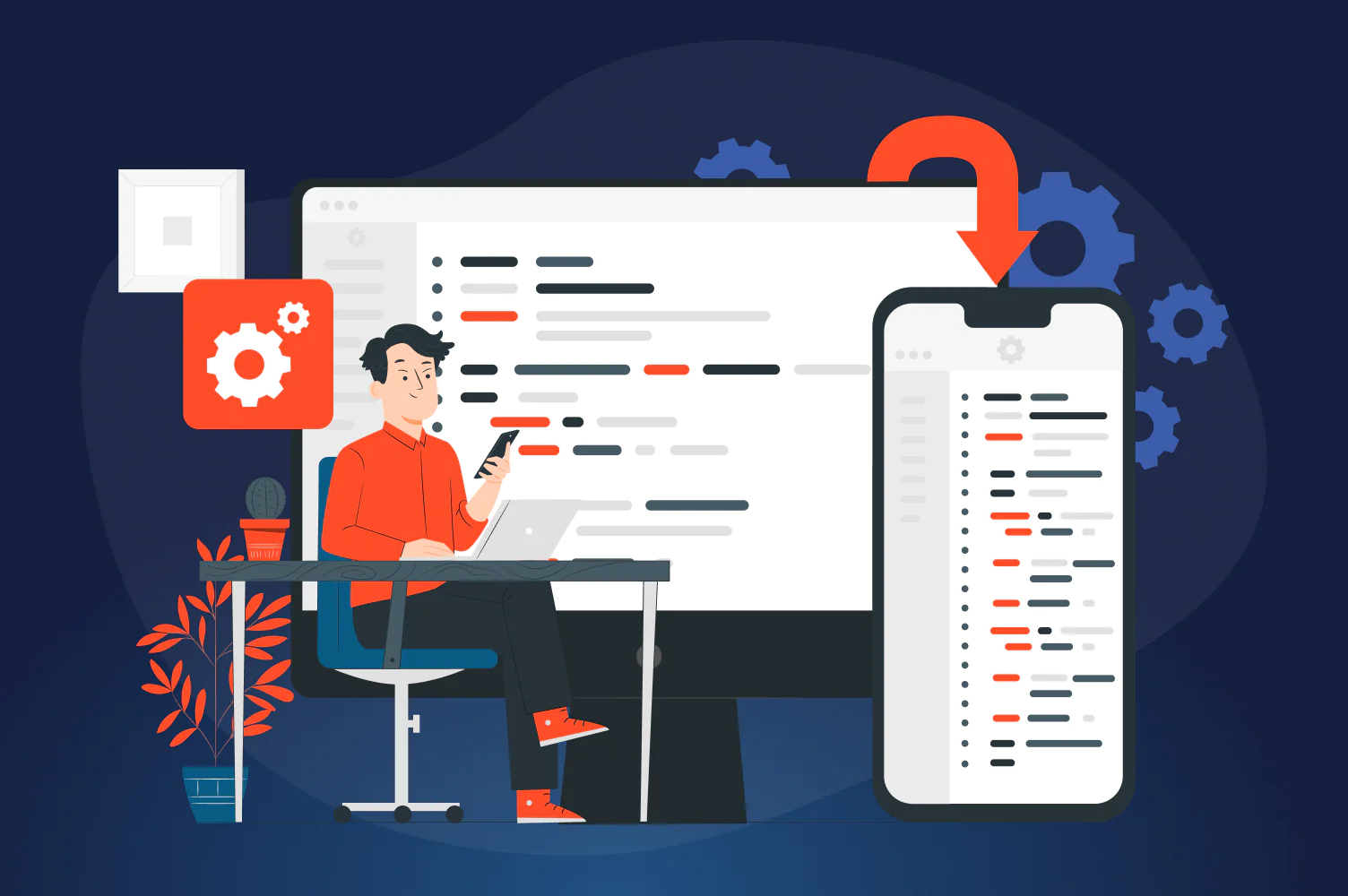Consumer Internet-of-Things (IoT) devices have penetrated our daily lives so deeply that we aren’t even getting impressed any longer with all these smart things that we thought could exist in sci-fi movies only. In fact, the consumer IoT market has only got a foothold and will grow its influence in the forthcoming future: there will be 50 billion connected devices by 2030.
The reasons for such hysteria can be explained with two factors. First, consumer preferences are focusing on convenience and improvement of lifestyle experiences, which is why the demand for consumer IoT is natural.
Second, availability of Big Data and relatable technologies can create a sophisticated digital infrastructure that enables businesses to fill the gaps of consumer needs. Generally speaking, people want to make their lives easier and convenient, while businesses have a technical capacity to do so. What a win-win situation!
A growing demand for consumer IoT forces many entrepreneurs to get creative to deliver unique value propositions to their customers. Unfortunately, excessive creativity can only spoil the initial business idea, and you can literally end up pitching your investors a “cutting-edge” smart device for counting water drops in a shower.
To help you minimize the risks of doing silly things for big money, the JatApp team presents you a consumer IoT anti-guide to show you examples of smart, yet useless products that should have become the advents of the “connected future”.
Consumer connected devices: are they different from other IoT products?
There are many categories of IoT solutions, so we can single out such a large separate segment of IoT as consumer connected devices. Consumer IoT are smart gadgets and connected devices that aim at the consumer market; these products are designed for personal use and improvement of a consumer’s lifestyle, routine tasks, entertainment, wellness and so on.
The difference from, say, industrial IoT is apparent here. Consumer IoT doesn’t intend to advance cars manufacturing processes or provide a better chemical hazard control at a plant. Helping a person keep fit, automate their home appliance, or make playing with a dog more fun are the kind of tasks consumer IoT can effectively cope with.
Thingy things you should not try to offer your customers
Since the consumer IoT market is bubbling with various products, businesses try to find new ways how they can create extra value to their target audiences. IoT for consumers focuses on improving users’ lifestyles and their daily experiences, while the meaning of value can get very subjective here.
As a result, consumer IoT companies come up with extravagant ideas and then get way too over excited about them. This kind of projects usually end with failure, since people don’t need extraordinary, but useless products.
We found a number of examples that epitomize how getting too creative can turn a good business idea into a bunch of useless bells and whistles. Let’s see what you shouldn’t do to your consumer IoT product and what you’d better do instead.
A treadmill desk
Office people are evidently very busy. They are so busy that they can’t afford even half an hour to do a short workout in a gym. Office workers need to leave the office at their break or do their exercise after work.
So, why don’t they combine work and fitness? With a treadmill desk, it’s possible to do a basic jogging exercise and keep oneself busy with workplace tasks. Sounds perfect.
In reality, employees won’t do two of these tasks effectively: either jogging is too slow or the task is done badly (if done at all, an employee will just run on the treadmill and stare at the laptop).
Apparently, the idea was to somehow resolve a problem of employees mobility within the office and beyond, but stuffing a gym into the workspace is “neither here nor there” decision. Instead, people that came up with this “brilliant” idea should have thought about some enabler that can make employees move across their office and beyond without being distracted from their work tasks.
For instance, JatApp’s client, an autonomous platform for powerbank rental, decided to create an IoT solution that can help employees advance their workplace experiences. By renting a powerbank or charging station, employees can change their work environments without fear of having no access to an electric circuit to power up their devices. In such a way, employees are no longer attached to their office desks and can work wherever they want.
Connected egg tray
Eggs spoil over time, so preservation of consumers from food poisoning and disrespecting chickens’ efforts are actually important things IoT in the food industry should cope with. With a smart egg tray, a consumer will be notified that the eggs will spoil soon. Just reading the expiration date on egg’s package is a very easy way to keep your eggs fresh. You need a special device for that.
When taking this device seriously, it does a job that people actually don’t need. But it would be much better to develop a smart fridge that tracks the quality of all products inside. No one would think “Well, I don’t care if bacon spoils, I am glad that eggs are fine”.
Moreover, instead of a connected egg tray, smart packaging can be a viable solution. Barcodes and quick response (QR) codes for reading a food product’s nutritional value, storage conditions, expiration dates, and even possible cooking recipes are a more reasonable approach because it offers a real value that applies to all products, not eggs only.
On top of that, food packaging can be powered with various augmented reality (AR) content to provide a consumer with extra product information, instructions, or simply entertainment to increase the brand awareness. A common example is wine with AR-enabled labels. By scanning a bottle label, a consumer can view information about the grape variety, food pairing recommendations, or learn about the history of the vineyard.
To this end, consumers can experience the real value a solution offers, instead of making extra effort to do usual activities with the “help” of a connected device.
Stress buster
We all experience stress from time to time and have nobody who can calm us down. With a stress buster, an armband that reads a person’s heart beat patterns, getting oneself cool, calm, and collected should be easier. As soon as a user is under stress, and their heartbeat changes accordingly, the device sends a notification message to friends and family’s social media with a request to calm the user down.
The idea’s author is somewhat right here: if you have a problem that bothers you, it’s a good decision to talk to somebody who can support you. On the other hand, reporting about a person’s stress to others is a disclosure of mental/emotional health that can be a subject to blackmailing.
Needless to say, if a person uses this IoT gadget, it means that they’re willing to share what makes them feel stressed and anxious. In fact, such delicate issues are going to be shared via social media where data security is out of the user’s hands. The device leaves many ethical questions unanswered, and they significantly outweigh the benefits. And what should a person do with this device, if they get stressed because they have no friends at all?
Actually, a smart armband or any connected wearable device could focus on instructing and guiding a person about their physical and mental wellness. Tracking physical activity, sleep regime and so on are the most common ways a smartwatch or fitness tracker can create a value for consumers.
Even the idea with stress busting could work better. When a person feels stressed, a smart armband can guide the user with breathing techniques and other mindful practices to teach them to take control of their emotions on their own without relying on social media reports and other people.
Smart light blinds
Smart home solutions are one of the submarkets, where various connected devices are never enough. Although, it doesn’t necessarily mean that every single IoT product is useful. For example, iBlind, a smart light blinds technology gathers real-time data from multiple sources to detect the brightness outside and inform a consumer whether it’s time to open the blinds. Wow. But you have to open the blinds on your own.
Again, the idea to make homes more data-driven and connected for the sake of comfort and advanced experiences is worth every praise. But what did stop that entrepreneur from adding an automation feature?
The entire solution becomes useless, as a consumer still has to come up to the window and open the blinds. They can do the same without being notified, it’s just enough to look out the window and make a serious decision about whether it’s too shiny outside or not.
iBlind took the right direction, but failed to deliver it in a way that is valuable to customers. Unlike this solution, our client from Germany intended to develop a building energy management system. The solution includes various connected sensors to gather information about heating, ventilation, and air conditioning (HVAC) in the building in order to automatically adjust them for creating comfortable environments and reduce power consumption, as well as the carbon footprint of the entire facility/house.
HVAC system smart analytics in building management system
The system is driven with artificial intelligence (AI) that analyzes real time HVAC data and adjusts relatable controls to maintain an optimal temperature, humidity, air conditioning, and power use at the same time. This home automation solution makes a consumer’s life more convenient as they don’t have to run across their house and move HVAC switches back and forth.
Pet fitbit
Various pet-related products are obviously popular, but some of them kind of miss the initial purpose. Trakz, a fitbit for pets, uses GPS navigation to track the location of a user’s pet, its physical activity, and how much the pet eats.
While tracking a pet’s fitness and location can be really useful, measuring food consumption is a very strange feature. If a user’s dog is canny enough to sneak out of the house and go beg for food from you neighbors, no IoT solution can help here!
Trakz isn’t the biggest consumer IoT horror, but the above mentioned feature is useless because pets’ masters actually see how much food they give to their furry friends. The startup should have gone for resolving some problems that consumers cannot cope with on their own.
Let’s take PetCube as an example. The company provides pet owners with smart cameras that include a laser toy that can be controlled with a mobile app, thereby enabling the master to play with their pet remotely and be sure that their four-paw friend is safe and well-behaving. All PetCube devices involve a connected camera and speakers to enable owners to talk to their pets at any time they want to.
Also, the newest PetCube product includes an IoT gadget for remote pet feeding. A user needs to put a pet’s treats inside the device, and get the food served when necessary. Again, you can see how IoT solutions can improve a person’s life in case the idea aims to offer a real value instead of attempting to awe users with some creative concept or design.
Beat Tweeter
As for the cherry on a cake, our top favorite useless IoT device for consumers: BeatTweeter. The product is an armband that scans a user’s heartbeat and when their heart stops (read — they die) the device sends the farewell post to Twitter with the user’s last words they decided to leave to their friends and loved ones.
The entrepreneurs do have a good sense of dark humor, but is there any tangible value a consumer can feel? Nobody knows for sure what awaits us after death, but it’s hardly possible that a cool last tweet is a guarantee the user will go to paradise.
Instead of making a consumer’s end-of-life seem like a dark joke, the startup could have invented a connected device that actually saves lives. And AdhereTech is a valid alternative here.
The company offers various connected products that help people to adhere to their treatment plan. Audio Smart Bottle is their main product that notifies patients about a need to take a prescribed pill on time. Additionally, the bottle sends an alert that the pills are running out, and the user needs to go to the pharmacy to get their bottle refilled.
Over 125, 000 premature deaths due to medication treatment non-adherence occur in the United States each year, which is why such solutions like Audio Smart Bottle can be really life-saving unlike some over creative, yet useless connected devices.
If you still want a useless gimmick
If the products we’ve just described are not convincing and you still think about some bizzare consumer IoT device, we have nothing left but give you some tips how to make your product as useless as possible:
- Don’t take user experience into consideration. Ask your designers to make the solution hard to wear, connect, create an account, and such. A good useless IoT product should force a consumer to take an extra effort to get a zero end-result.
- Never care about data security. Private data of your consumers should be easily accessible and hacked to enable as many third parties and fraudsters to use it!
- Don’t create value. In other words, your connected device doesn’t have to have any purpose. Just existing is already a tough task to complete and a sound reason to sell the product.
- Pick the first technology you see. The best technology for your useless IoT device is the first one you find. If you want to create a consumer IoT solution that doesn’t actually solve anything, searching for a relatable technology is a waste of time.
JatApp will save you from a momentary lapse of reason
Luckily enough, the majority of consumer IoT anti-trends we’ve discussed in this article remained just ideas on a whiteboard. Nevertheless, getting way too enthusiastic about some crazy idea can happen to everyone. That’s why you need to make important decisions in cooperation with a team of experienced professionals.
JatApp has been developing IoT solutions since 2015, and we can not only build a quality product but also provide a deep business analysis to prompt you with business ideas that will certainly work out, since 99% of our customers were satisfied with the solutions we delivered to them.
If you want to stay on the sane side of consumer IoT, just contact us. We’ll reach out to you as soon as possible.




















